Most animal species last a few million years before going extinct but there are always exceptions called living fossils. Some of these animals have been around for hundreds of millions of years! Let’s discover some of the oldest prehistoric animals still alive today.
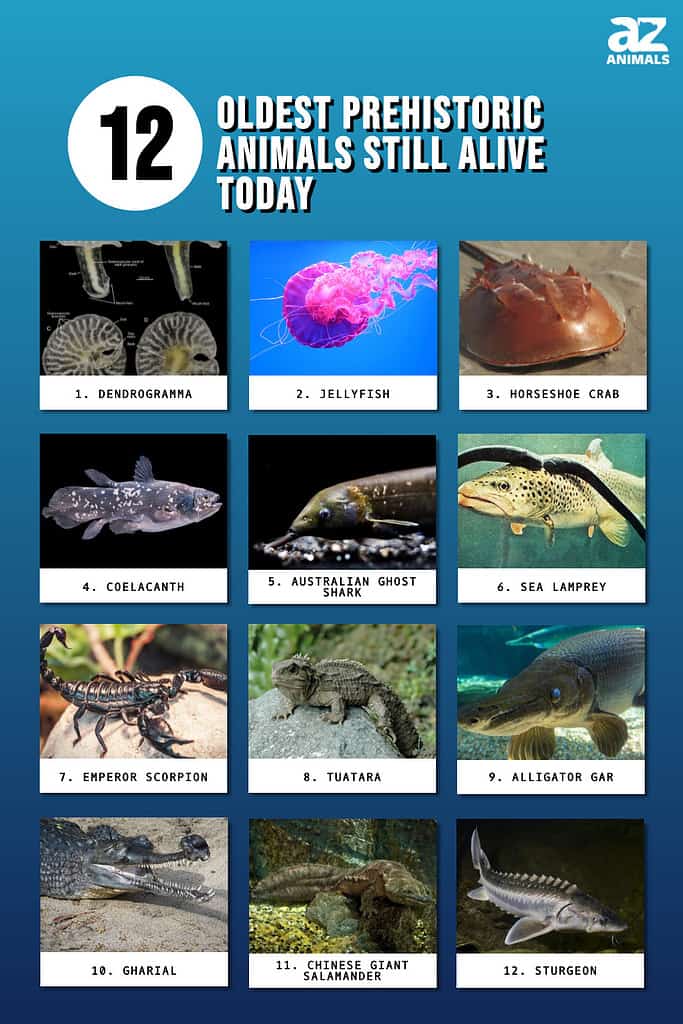
12. Sturgeon: 100 Million Years Old

There are many different species of sturgeon and most have been around for 100 million years.
©Thomas Hasenberger/Shutterstock.com
Sturgeon have existed for 100 million years and they’re found in both fresh and saltwater environments. There are over 25 different types throughout temperate regions of the Northern Hemisphere.
Some of the best caviar in the world is harvested from sturgeon which has put some species at risk of extinction. Lampreys use them as their blood food source though they face few predators because they’re very large. The largest sturgeons are well over 1,000 pounds.

The term caviar refers only to roe taken from wild sturgeon in the Caspian and Black Seas.
©Subbotina Anna/Shutterstock.com
11. Chinese Giant Salamander: 170 Million Years Old
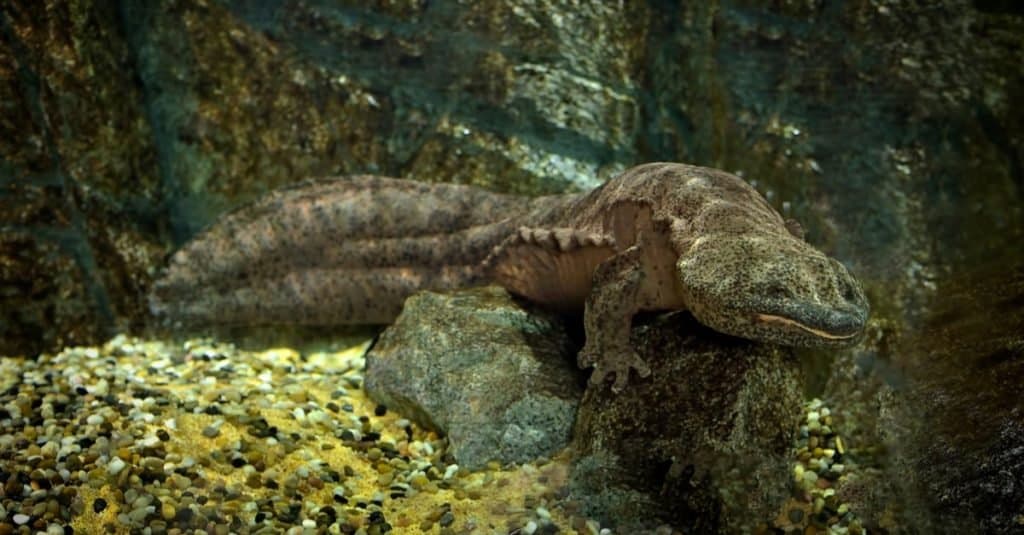
The Chinese giant
salamander
is the largest salamander in the world and can reach six feet long.
©tristan tan/Shutterstock.com
The Chinese giant salamander is the largest salamander on the planet and it’s been around for approximately 170 million years. They weigh over 100 pounds and approach six feet in length.
They’re critically endangered and live in fragmented ranges. These salamanders are mostly found in swift streams and clear lakes.
10. Gharial: 200 Million Years Old
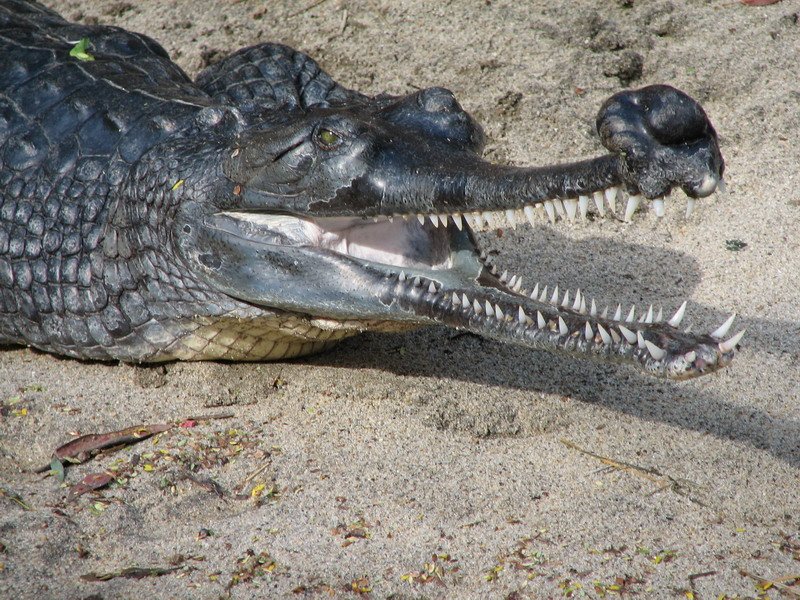
Despite having many sharp teeth, gharials swallow their prey whole reather than chewing it.
©Justin Griffiths / Public Domain, Wikimedia Commons – License
Gharials have been around for 200 million years and they live on the Indian subcontinent in murky and slow rivers. Their range has shrunken dramatically and now only spans some of Nepal and northern India. They’re at risk of extinction and there are probably less than 100 individuals in the wild.
They spend most of their time in the water and they only come to shore to sunbathe and nest. They can’t regulate their body temperatures so they have to sun themselves or cool down in water depending on outside temperatures.
These reptiles have over 100 sharp teeth even though they can’t chew. They use their powerful jaws to chomp down on prey before swallowing it whole.
9. Alligator Gar: 215 Million Years Old
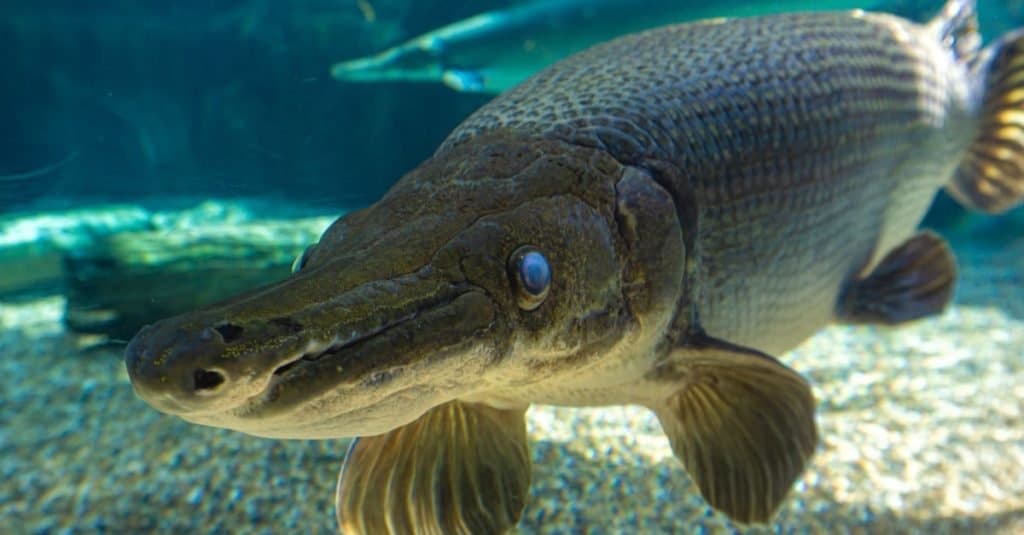
Named for their similar appearance to alligators,
alligator
gar are strong ambush predators that have been around for 215 million years.
©TKBackyard/Shutterstock.com
Alligator gar are one of the largest fish in North America and they’ve been around for about 215 million years. They are up to ten feet long and sometimes weigh 300 pounds. Their huge mouths are used to grab prey that they ambush from below. While they prefer fish like carp, they’ll eat small mammals, birds, and turtles if convenient.
8. Tuatara: 250 Million Years Old

Tuataras are unusual looking reptiles that have completely separate linegage to lizards.
Another prehistoric animal alive today is the tuatara. Tuataras are reptiles from New Zealand that came into being around 250 million years ago. They exist somewhere between what a dinosaur was and what makes a lizard today. They have a unique lineage and aren’t a lizard or a dinosaur.
Scientists are fascinated by them because they provide clues to how snakes and lizards evolved. They’re the last of their kind on the planet. They are long-lived and average around 60 years old when they die.
7. Emperor Scorpion: 300 Million Years Old
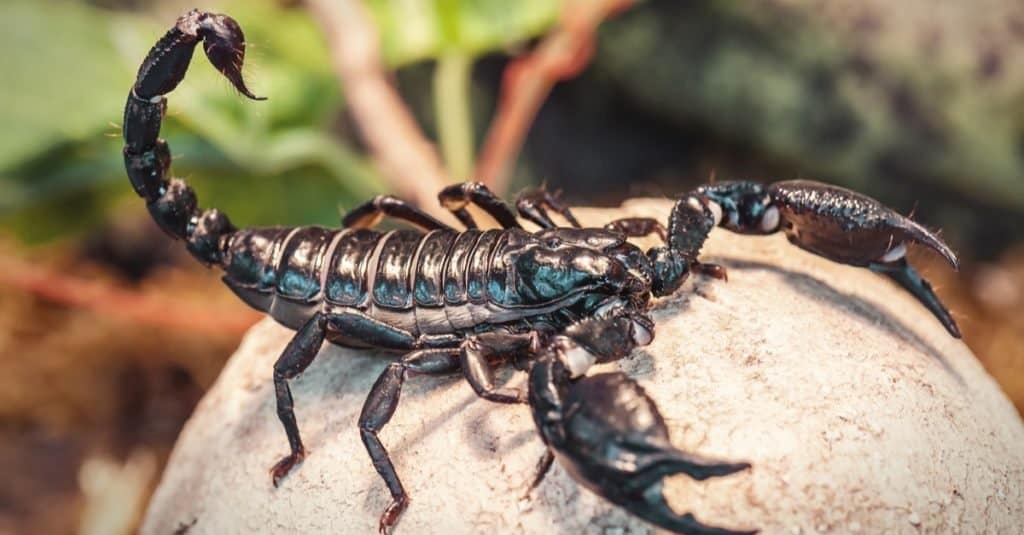
Emperor scorpions are some of the largest scorpions in the world.
©Vova Shevchuk/Shutterstock.com
At almost eight inches in length, emperor scorpions are some of the biggest scorpions in the world. They’re also living fossils that have been around for 300 million years.
They live in west Africa and while they’re sometimes found in savannahs, they are usually found in the rainforest. Since their venom is mild and they aren’t aggressive, they’re a popular choice in the exotic pet trade.
6. Sea Lamprey: 340 Million Years Old

Sea lamprey can attach themselves to fish so they can feed on their blood.
©Sweeting, Roger [Photographer] (2016) Sea lamprey parasitising brown trout. Freshwater Biological Association, UK / Creative Commons – License
Lampreys are vertebrates that have been around for at least 340 million years. They’re jawless and instead have a toothed sucker for a mouth. While they look like an eel, they aren’t related.
Sea lampreys spend most of their life in the ocean though they do migrate through rivers and lakes to mate. They latch on to fish so they can consume their blood. Lake sturgeon, salmon, lake trout, northern pike, and walleye are common targets.
5. Australian Ghost Shark: 400 Million Years Ago
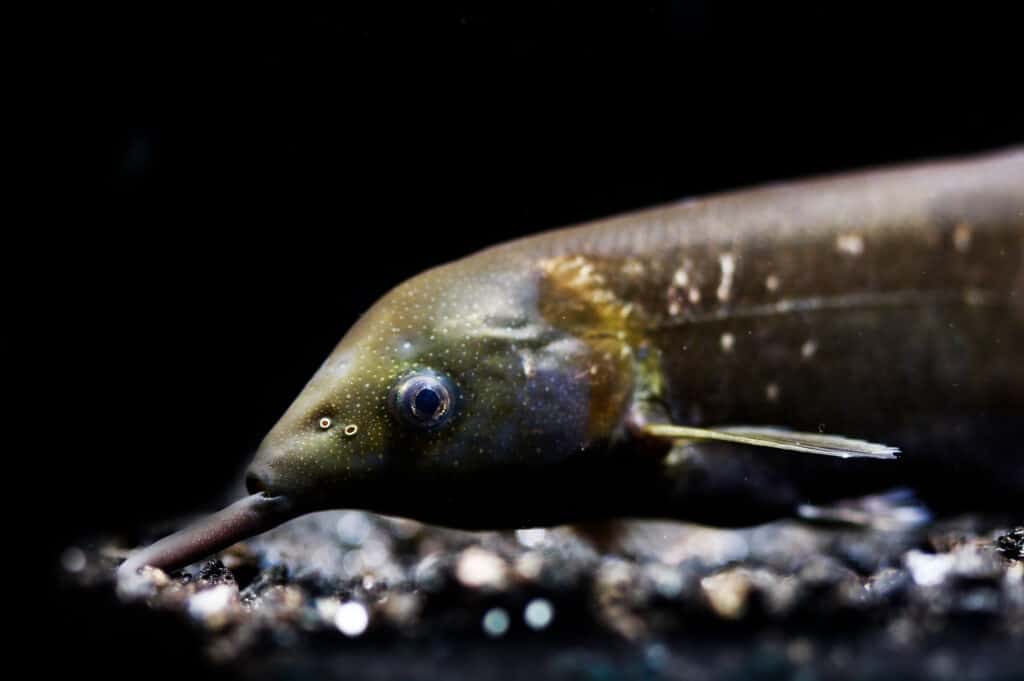
The
elephant
fish are demersal fish, meaning they live near the sea bed. They thrive at depths of 600 to 5,000 ft below the surface.
©Pavaphon Supanantananont/Shutterstock.com
The Australian ghost shark, also known as an elephant fish, has existed for around 400 million years. While they’re closely related to sharks and are cartilaginous like them, they aren’t sharks. They’re solitary animals that spend their days combing the sea floor for shellfish, mollusks, shrimp, and other small prey.
4. Coelacanth: 410 Million Years Old
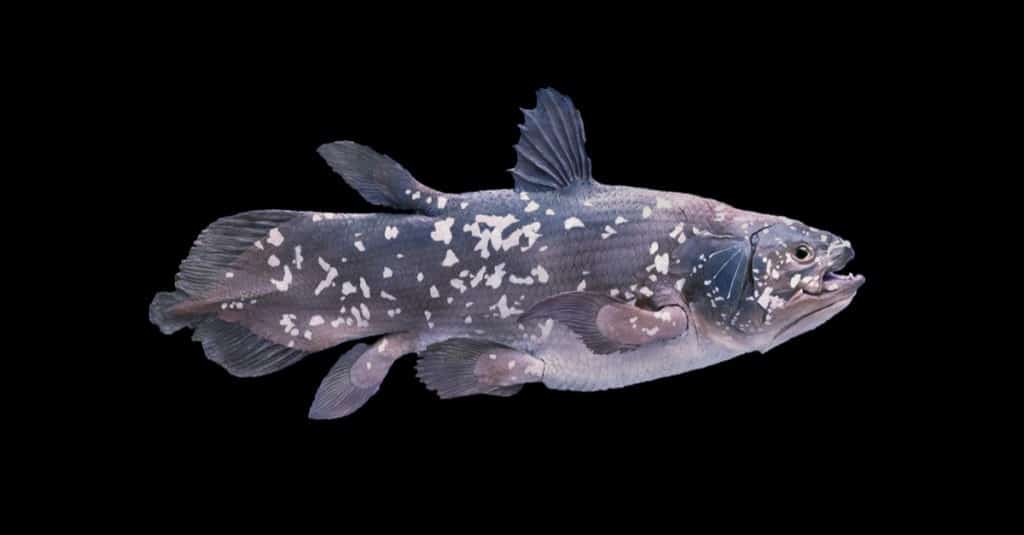
Living at depths of around 2,300, coelacanth are little-known fish that have been around for 410 million years.
©AlessandroZocc/Shutterstock.com
Coelacanth are lobed fish that have been around for approximately 410 million years. They are deep sea fish that exist around 2,300 feet below sea level. It’s one of the earliest examples of a jawed fish.
They have tiny brains that only take up 1.5 percent of what’s in their cranial cavity with fat taking up the remainder of the space. In 1938, scientists rediscovered this species after thinking it had gone extinct millions of years ago.
3. Horseshoe Crab: 445 Million Years Old

Despite their name, horseshoe crabs are not actually crabs at all.
©SandraG/Shutterstock.com
Horseshoe crabs have been around almost unchanged for 445 million years. They aren’t crabs and are more closely related to spiders and scorpions. These animals have ten eyes but they still can’t see very well.
Historically, some people ate horseshoe crabs regularly in southeast Asia. Their popularity in food has decreased over the last few decades. These animals are used for bait which has drastically reduced their numbers in certain areas.
2. Jellyfish: 500 Million Years Old
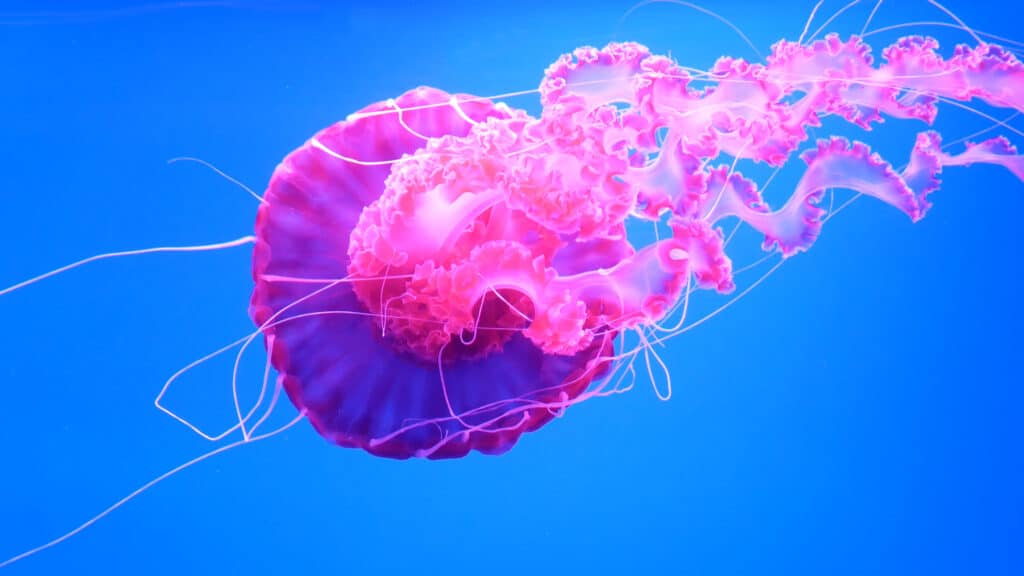
There are more than 4,000 species of jellyfish, with many having been around for 500 million years.
©LanKS/Shutterstock.com
Jellyfish are invertebrates that have existed on earth for at least 500 million years. Today, there are more than 4,000 species of these animals in the world’s oceans though there may be a lot more to be discovered.
While the word fish is in the name jellyfish, jellyfish are not fish. Jellyfish do not have gills, scales, fins, or backbones like almost all fish. Jellyfish sometimes gather in huge groups called blooms.
1. Dendrogramma: 550 Million Years Old
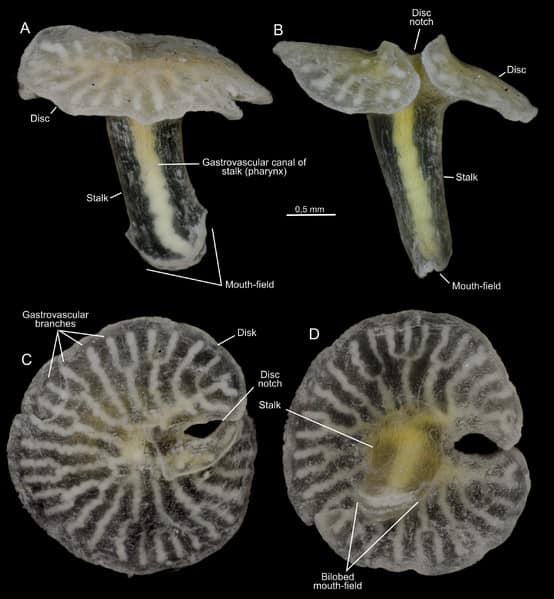
Shaped like mushrooms and at barely one inch tall, dendogramma are unusual marine organisms.
©Jean Just, Reinhardt Møbjerg Kristensen and Jørgen Olesen – License
Dendrogramma are animals that look like little mushrooms with a rudimentary gastrovascular system. They do not have a nervous system nor do they have any sex organs.
Dendrogramma evolved into a form almost identical to what they are now around 550 million years ago. They were discovered in 2014 and are a source of fascination for many marine biologists.
Summary of the 12 Oldest Prehistoric Animals Still Alive Today
Here is a recap of the prehistoric creatures living on our planet, starting with the oldest:
| Rank | Animal | Years Existing on Earth |
|---|---|---|
| 1 | Dendrogramma | 550 million years |
| 2 | Jellyfish | 500 million years |
| 3 | Horseshoe Crab | 445 million years |
| 4 | Coelacanth | 410 million years |
| 5 | Australian Ghost Shark | 400 million years |
| 6 | Sea Lamprey | 340 million years |
| 7 | Emperor Scorpion | 300 million years |
| 8 | Tuatara | 250 million years |
| 9 | Alligator Gar | 215 million years |
| 10 | Gharial | 200 million years |
| 11 | Chinese Giant Salamander | 170 million years |
| 12 | Sturgeon | 100 million years |
The photo featured at the top of this post is © tristan tan/Shutterstock.com
Sources
- Ocean Conservancy, Available here: https://oceanconservancy.org/blog/2019/02/13/prehistoric-ocean-animals-still-around-today/
Thank you for reading! Have some feedback for us? Contact the AZ Animals editorial team.






